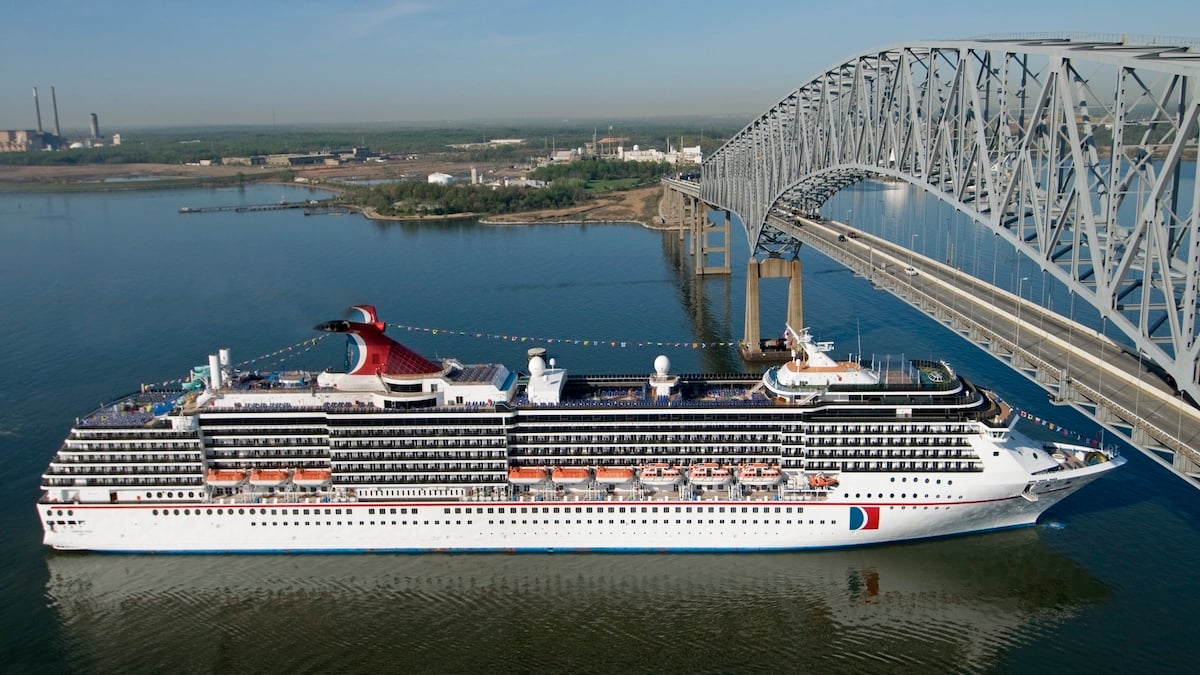Like many others, I was dumbstruck when Baltimore’s Francis Scott Key Bridge collapsed on March 26, 2024 after being hit by the container ship MV Dali. Six men lost their lives in the accident, and three are still missing. I lived in the Washington, DC area for almost a decade and made several trips up to Charm City during that time (I even briefly volunteered at Fort McHenry National Monument and Historic Shrine for a while). The Key Bridge was a landmark…and now it’s gone. It feels like Baltimore and Maryland have both lost something special. Sailing underneath the Key Bridge has long been a favorite pastime for many people, and it was an especially popular thing to do when on a cruise ship.
The economic hit to Baltimore is going to be significant. Officials have promised to rebuild the Key Bridge as quickly as possible, but it will still be some time before that happens. For now, wreckage blocks the Port of Baltimore’s entrance and all shipping has stopped. Efforts are currently underway to reopen the channel by the end of May. Aside from being one of the largest and busiest commercial ports in the United States, several cruise lines have operations in Baltimore as well. What does this disaster mean for the city’s cruise ship operations?
Cruise Maryland
Maryland’s colonial legislature founded the Port of Baltimore in 1706. For over 300 years, it’s been a major hub of commerce and trade for the Mid-Atlantic region. The port was one of the reasons that the British tried to take Baltimore during the War of 1812, which ultimately lead to Francis Scott Key writing a poem called “The Star-Spangled Banner.” The port was as busy as ever until just a few weeks ago.
The Francis Scott Key Bridge opened on March 23, 1977 and spanned the Patapsco River and completed I-695 (also known as the Baltimore Beltway). It was an engineering marvel and soon became a beloved symbol of Charm City. Ships sailing in and out of Baltimore had to cross under the steel behemoth, which had 185 feet of vertical clearance.

The Cruise Maryland Terminal opened in 2006 and, while a relatively new addition to the port’s long history, has been successful: it is the 29th busiest cruise port in the United States. Currently, Carnival Cruise Line, Royal Caribbean International, and Norwegian Cruise Line all sail out of Baltimore. Several smaller cruise lines also operate out of the city. A total of 444,112 passengers sailed on 107 cruises in 2023. These cruises contributed $3,248.1 million of the Port of Baltimore’s total economic value of $70,280.4 million for the year.
The 2024 Cruising Season
There will be significant impacts on this year’s cruise season. A total of 115 sailings aboard 12 ships had been scheduled for this year, according to the Cruise Line International Association. This equals 378,000 passengers in all. This disruption will mean fewer tourist dollars to Baltimore. But while we won’t know the true economic hit until much later, but port workers and small businesses are already affected. President Joe Biden recently announced grants and low-interest loans to help those impacted by the bridge collapse.
Then there’s the costs to the various cruise lines too. Carnival recently announced that they could lose up to $10 million from the disaster’s aftermath. Norwegian and Royal Caribbean were asked to comment by CBS News, but have not yet released any statements. But the numbers will likely be similar.
Homeport Changes
Many of Baltimore’s cruise ships are being rerouted to Norfolk, Virginia. There are only four cruise ship ports in the Mid-Atlantic, which also includes New York City and Charleston, South Carolina. The Carnival Legend is temporarily operating out of Norfolk and was at sea when the disaster happened. The Vision of the Seas has also rerouted to the port. Both cruise lines arranged for shuttle busses to take passengers back to Baltimore after disembarking. It is uncertain how long these ships will have to stay in their temporary homeports.

What Happens Now?
Two temporary channels are open now, but only smaller ships can access the Port of Baltimore. Larger ships are still unable to pass through. Officials hope to have the whole channel cleared by late May. However, this ambitious timetable have some people skeptical (myself included). It’ll take weeks alone to remove Dali’s cargo containers. Then even more time to move the damaged container ship itself.
Then there’s rebuilding the bridge. Experts estimate that the project could take five to seven years and cost at least $400 million (if not more). There’s just much that’s unknown at this point in time, and we’ll really just need to wait and see what happens.

Leave a Reply